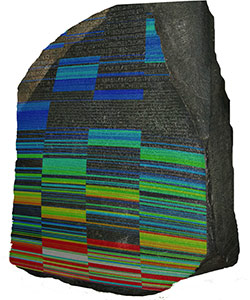Research / Application AreasBiological Systems & Mathematical Biology
Ever better experimental techniques allow to perform experiments under tightly controlled conditions and can deliver gigantic amounts of data reflecting the complexity of biology. This has vastly increased the importance of mathematical and computational descriptions of biological systems. Thus, quantitative biology is a major research thrust in ESAM. Much of that research is done in connection with the NSF-Simons National Institute for Theory and Mathematics in Biology (NITMB).
Faculty
 |
 |
 |
| Daniel Abrams | Luís Amaral | Alvin Bayliss |
 |
 |
 |
| David Chopp | William Kath | Madhav Mani |
 |
 |
 |
| Niall Mangan | Michael Miksis | Hermann Riecke |
 |
 |
|
| Petia Vlahovska | Vladimir Volpert |
Recent publications

Jump to a Section
Biofluid mechanics

Research within ESAM involves the development of mathematical models of interesting biological systems, the development of new analytical and computational methods to solve these models, and interaction with experimental groups to verify the validity of the investigation. Specific areas of current research include biofilms (an aggregation of bacteria on solid surfaces surrounded by gas or liquid), vesicle and cell dynamics, and the dynamics of aneurysms.
Core Faculty
M. Mani, M.J. Miksis, P. Vlahovska
Developmental Biology

In analogy with the morphogenesis of our planet, while the details of the current shape of continents depends on time and historical contingency, the mechanisms that drive tectonic plates and the flows in the Earth's core are far more general. What are the underlying principles and mechanisms that drives the emergence of organismal form? This is the central question driving our research.
Our work explores two avenues of research: 1) Solving data-driven, inverse-problems that allow us to make measurements of physical forces and chemical kinetics that experiments do not give direct access, and 2) in close collaboration with experimentalists, we combine measurements made in their labs with ours to guide the development of mathematical models that are phenomenological in nature and formalize our intuition for how the physical properties of polymers, cells, and tissues emerges from, and constrains, the biological process of interest.
Core Faculty
M. Mani, N. Mangan
Computational Ecology

F

Fi
Core Faculty:
A. Bayliss, M. Mani, V. Volpert
Genomics

This is perhaps the most pressing challenge in quantitative biology and biomedicine, and groups in ESAM are using tools from statistics, machine learning, and statistical physics to build data-driven mathematical models to address it.
Core Faculty
W.L. Kath, M. Mani
Neuroscience
The brain is exceedingly complex, from the sub-cellular biophysical processes that control individual neurons and their communication to the intricate neuronal networks characterizing individual brain areas and their mutual interactions. To unravel the function of the brain at these different levels mathematics and computation bring an exciting, extraordinarily wide range of concepts and tools to bear, like ordinary and partial differential equations, stochastic processes, agent-based modeling, statistics, ... just to mention a few.
Research in ESAM identifies the functional relevance of the complex shape (morphology) that characterizes many neurons (Fig.1) and the computational modeling provides valuable information about quantities that are experimentally not accessible, e.g. ion concentrations. Such modeling helps obtain a more complete picture of the dynamics of individual neurons and their function in neural circuits. That, for instance, control the motion of a fly in response to temperature variations (Fig.2).


In large networks, their vast interconnectedness is a major factor contributing to the power of the brain. How do the functional properties of these networks emerge from their connectivity? Learning, an essential feature of the brain, is to a large extent associated with changes in that connectivity. What controls these biological processes, which can also involve the addition or removal of neurons? Computational modeling building on experimental observations is able to provide answers and insight. (Fig.3)

Much of the computational neuroscience research in ESAM is done in close collaboration with various experimental research groups; thus, ESAM students often are regular members also of their experimental partner group.
Core Faculty:
W.L. Kath, H. Riecke
Courtesy Faculty:
J. Fitzgerald


